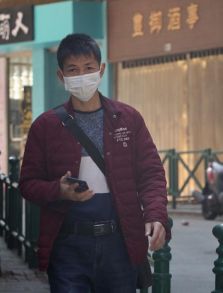
“Act decisively and early to prevent the further spread or quickly suppress the transmission of COVID-19 and save lives” is the first strategic objective of the UN framework on responding to the socio-economic impacts of COVID-19. It calls for a decisive, innovative and coordinated response to suppress the spread of the virus and address the socio-economic devastation that COVID-19 is causing in all regions.
New innovations are accelerating national capacities to track COVID-19 transmission
To constrain fast-spreading pandemics such as COVID-19, speed is essential. Preparedness measures must outpace the pace of transmission. One key measure is to rapidly identify infected people so they can be quarantined and treated. Due to resource limitations, developing countries cannot afford to implement mass-screening programmes to uncover new infections. However, real-time contact tracing offers great potential. This has proved to be highly effective in China, Republic of Korea, Singapore and Thailand. Worldwide, several countries are already issuing COVID-19 contagion alerts to personal mobile phones.
The Republic of Korea capitalized on its highly wired connectivity to promote openness as well as contagion spread. ICT enabled services such as cellular broadcasting technology, mobile apps & devices, online platforms, artificial intelligence and open government data kept the public informed and helped augment contact tracing and widespread testing. Digital technologies have emerged as country’s effective tools to combat the spread and impact of COVID-19. Recently, India launched the 'Aarogya Setu' tracking app to help track new cases of infection by using Bluetooth and smartphones’ GPS systems that provide information to help determine whether a person has been near an infected person or not. In conjunction with social distancing, testing, and isolation, contract tracing is proving to be an essential part of the emerging solutions to curb the spread of the virus.
While governments are moving forward with rapid adoption of such contact-tracing apps in response to the COVID-19 emergency, many cyber-security experts worry that proliferations of such apps could violate their users’ privacy and be used as a surveillance tool by governments. However, innovations and partnerships are enabling a “privacy-by-design” approach to these apps. For example, Google and Apple recently announced a joint effort to enable the use of Bluetooth technology to help governments and health agencies reduce the spread of the virus, with user privacy and security central to the design. The rare collaboration between the two Silicon Valley companies, whose operating systems power more than 90 per cent of the world’s smartphones, is bound to accelerate usage of apps that aim for potentially infected individuals to be tested or quarantined more quickly and reliably than existing systems. This example demonstrates how contact tracing technologies can capitalize on recent trends in innovations and partnerships to play a vital role in managing the pandemic. As lockdown phases world-wide come to an end and governments design exit strategies, this will only become more important.
Hotspot mapping in extreme disaster events helps real-time COVID-19 risk visualization
Risk hotpot mapping has proven to be an effective preparedness strategy in previous complex and dynamic extreme disaster events. This approach is now being replicated in an epidemiological risk context and adopted by most of the affected countries. It allows the countries to visualize COVID-19 incidences through timelines in specific geographical locations. It also helps to predict the spread of the virus among local populations. By using a network perspective of identifying ‘super-spreaders’ or super-spreading events, this approach visualizes the interconnectedness between cases and clusters of infections.
The identification of dynamic risk hotspots allows countries to facilitate critical, risk-informed interventions that suppress the exponential spread of the virus. For example, governments decide to impose lockdown measures on risk hotspots at different scales affecting airlines/transport services at the global level and insulating provinces and cities from the potential spread of the virus at the national and local levels to prevent community-level spread. Many countries are planning to contain local outbreaks of COVID-19 based on different categories of risk zones, establishing containment and buffer zones within the risk hotspots. Targeted interventions are implemented in specific zones based on dynamic risk assessments. The resulting cluster-containment response strategies are yielding positive results and helping countries to restrict the transmissions of COVID-19, especially within vulnerable communities.
Outpacing the COVID-19 pandemic requires agile and smart preparedness strategies
The COVID-19 pandemic poses wide-ranging challenges ranging from the need of early-detection to preventive actions such as containment and isolation. Rapid action is vital to outpace COVID-19. In this regard, the key enablers are detecting the risk early, intelligent contact tracing, analytics-based risk hotspot mapping and cluster predictions. These are all vital elements of the agile and smart national preparedness strategies that countries must develop to curb the outbreak before a vaccine is developed. By using this common preparedness infrastructure, the pandemic response can leverage the lessons learned from managing previous extreme disaster events.
ESCAP’s initiative to operationalize the Asia-Pacific Disaster Resilience Network is an important step forward to offer intelligent crisis management solutions derived from the risk analytics and state-of-the-art multi-model ensembles.


